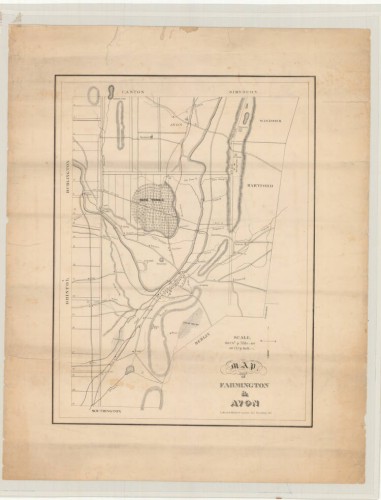On July 4, 1825, the ground-breaking ceremonies for the Farmington Canal took place at Salmon Brook village in Granby. Governor Oliver Wolcott gave the day’s address to the 2,000 to 3,000 people in attendence and had the honor of turning over the first spade of earth. In the ceremony, Wolcott described the canal’s purpose as “uniting the Valley of Connecticut with the City of New-Haven.” The canal, also known as the New Haven and Northampton Canal, was privately funded and built in the early 19th century to provide water transportation from New Haven into the interior of Connecticut, Massachusetts, and points beyond.
The original plans called for the canal to extend north from New Haven’s tidewaters through Granby up into Massachusetts, ending at Northampton. Also proposed was a branch that would start in Farmington, pass through Unionville, and end in Colebrook. The eventual plans for the completed canal were to connect to the Erie Canal via New York’s Hudson River. Final construction ended up being only the 80 miles of the main line from New Haven to Northampton and the 3 1/2 of the branch in Unionville. Twenty-foot-wide by four-foot-deep, the completed canal required moving 4,000,000 cubic yards of earth and rock with shovels, wheelbarrows, and horse-drawn wagons.
Today, the Farmington Canal is part of the Rails to Trails program and runs from downtown New Haven up to Northampton, Massachusetts. The entire extant canal right of way in Connecticut is listed on the National Register of Historic Places.









